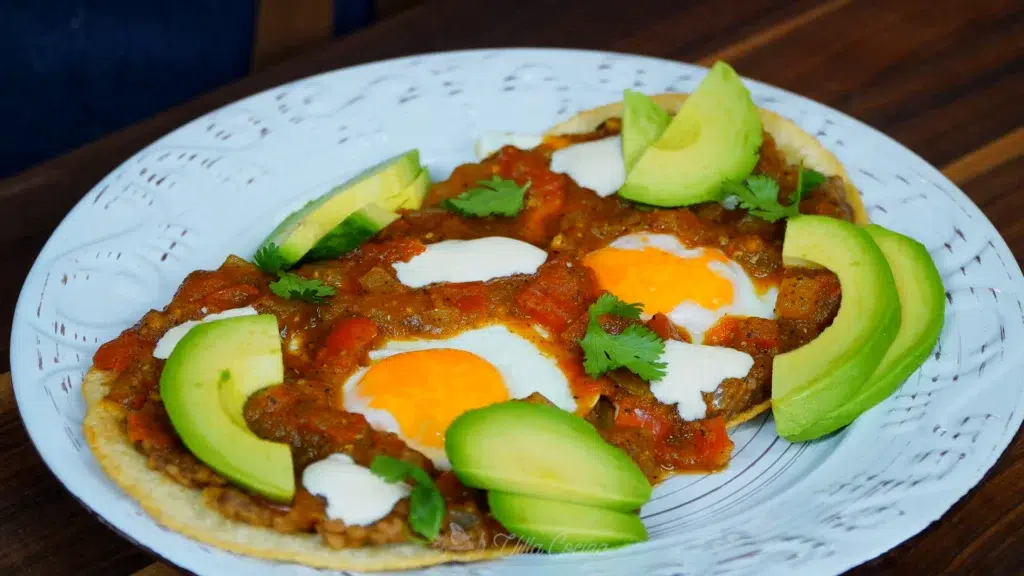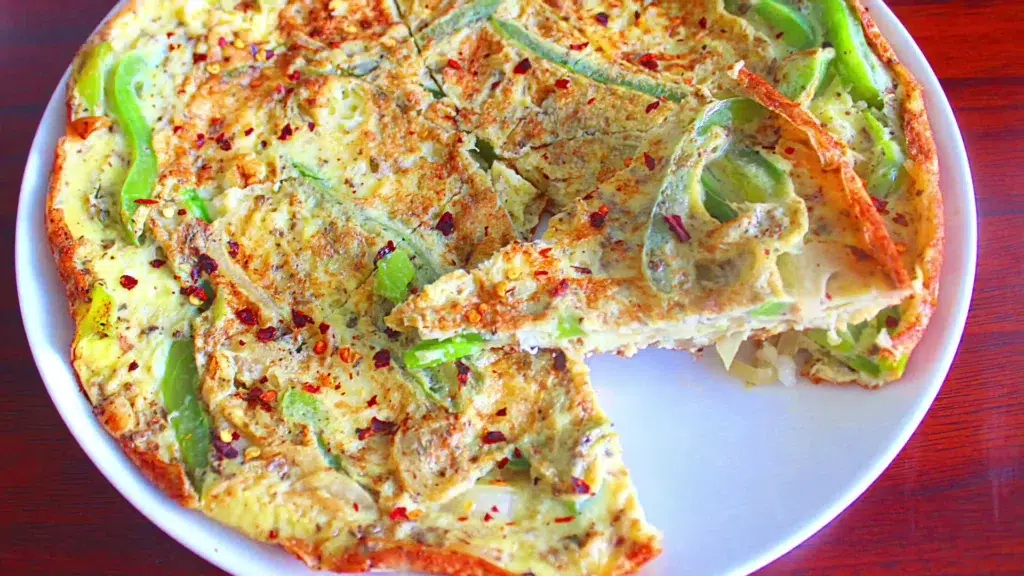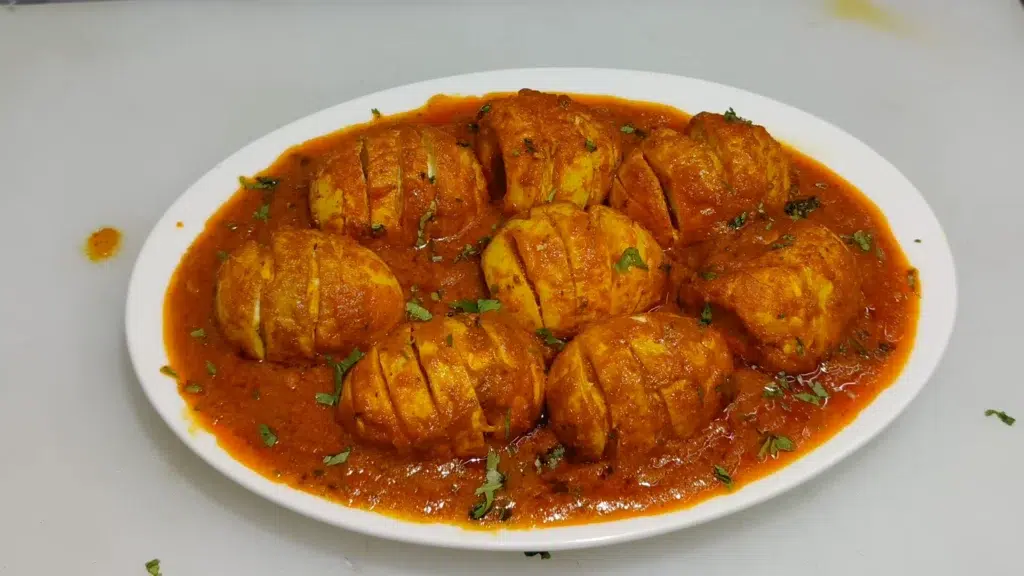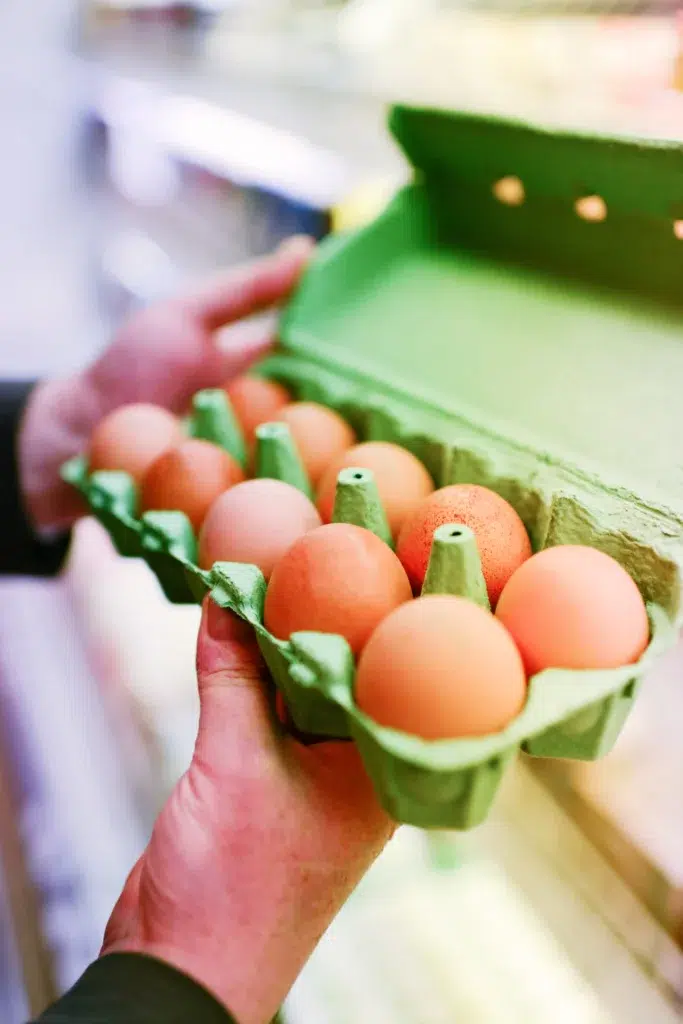Some links on this page are affiliate links. This means we may earn a commission at no additional cost to you if you click through and make a purchase, you can check our Affiliate Disclosure. Thank you for your support!
Eggs have made their way into nearly every kitchen around the globe. They are not just a breakfast staple; they form the backbone of countless recipes from different cultures.
Discover How Every Culture Cooks with Eggs
People worldwide use eggs to create an astonishing variety of dishes. In Italy, chefs turn eggs into rich carbonara sauce. Over in Japan, they craft delicate tamagoyaki, a sweet omelet favorite in bento boxes. Travel to India, and you’ll find eggs curried with spices, served hot with bread or rice.
Eggs do more than add flavor; they also structure cakes and pastries, bind meatballs, and thicken sauces. This versatility is why eggs are essential in kitchens everywhere.
Explore Egg as Symbols in Food and Stories
Eggs aren’t just for eating; they carry meaning in many cultures. In many places, it symbolize new life and are central to spring festivals and new year celebrations. For example, painted egg brings color to Easter in many Western countries, while in China, red egg celebrates a baby’s first month.
Stories and myths often feature eggs too. They appear in creation tales, symbolizing the start of life and the universe. Every time we cook with it, we’re not just making food; we’re connecting with a rich tapestry of human tradition that values it as a source of life and a bearer of stories.

Egg-ceptional Dishes That Define Cultures
Eggs are not just a part of the diet; they shape culinary identities and unite people. Let’s explore some egg dishes that have become cultural icons in their own right.
Savor the Spice: Mexican Huevos Rancheros

In Mexico, breakfast brings the family together with a dish called Huevos Rancheros. Cooks fry eggs and place them on warm, soft tortillas. They then pour a generous helping of spicy tomato salsa on top. This meal is a hearty start to the day, packed with flavors that wake up your taste buds. Fresh cilantro and creamy beans often accompany the dish, offering a perfect balance to the bold spices.
Italian Frittatas: A Versatile Meal for Any Time of Day

Italy gives us the frittata, an open-faced omelet loaded with possibilities. You can find frittatas filled with anything from garden vegetables to rich cheeses and cured meats. Cooks mix the eggs and fillings, then slowly cook them to achieve a fluffy and light texture. Italians enjoy frittatas at any meal, appreciating their versatility and how they make every ingredient shine.
Japanese Tamagoyaki: The Art of Layered Flavors

In Japan, the humble egg transforms into tamagoyaki, a sweet and savory rolled omelet in breakfasts and sushi. The cook layers seasoned eggs one at a time, rolling them into a delicate log sliced to reveal its layers. Tamagoyaki is a testament to the precision of Japanese cooking, requiring skill to create its unique texture and taste. It’s a favorite among children and adults, often packed into lunchboxes for a midday treat.
French Quiches: A Canvas for Creativity

The French quiche is a dish that allows for endless creativity in the kitchen. It starts with a buttery pastry crust filled with a silky egg custard. Chefs then add ingredients like cheese, meats, seafood, and vegetables. Baked to a golden-brown perfection, the quiche is a staple in French cuisine that has found its way into cafes and homes worldwide. It’s a dish that invites you to experiment and enjoy the rich flavors that only eggs can bring together.
Spanish Tortilla: More Than Just an Omelet

In Spain, the tortilla is a beloved egg dish much more than your average omelet. It’s a thick, hearty creation featuring potatoes and onions in a deep, luscious egg mixture, simmered to achieve a perfect balance between tenderness and structure. Often served at room temperature, it’s a common sight in tapas bars and family gatherings, showcasing the simplicity and comfort of Spanish cooking.
ALSO READ: The Ultimate Guide To Enhancing Your Recipes With Dried Herbs
Indian Egg Curry: A Spicy Delight

Venture into the vibrant flavors of India with its egg curry, a dish that’s as diverse as the country itself. Here, hard-boiled eggs become the show’s star, simmered in a sauce full of spices like turmeric, garam masala, and chili. It’s often garnished with fresh herbs and served with rice or bread, making for a meal that is both comforting and bold. This dish reflects India’s love for deep, intricate flavors and its ability to turn simple ingredients into something extraordinary.
The Versatile Egg: Bringing Cultures Together
As we journey through the world’s kitchens, we see that eggs are not just a universal ingredient but also a versatile one, embracing the flavors and traditions of each place they touch. From a spicy Indian curry to a delicate Japanese roll, it has a unique ability to bind ingredients and cultures, offering a window into the culinary heart of societies around the world. It’s clear that in the realm of cooking, eggs are indeed a global language, understood and loved by all.
Techniques That Make Egg the Star of the Kitchen
In the hands of a skilled cook, eggs can transform into the highlight of any meal. By mastering a few techniques, you can make it the star of your kitchen too.
Perfect Your Poach: Tips for Silky Egg Perfection
While poaching eggs might seem like a difficult cooking task, if you do it right, you can enjoy soft whites with silky, runny yolks. Start with fresh eggs since they hold their shape better. Bring a pot of water to a gentle simmer and add a small splash of vinegar to help the whites coagulate. Break an egg into a small cup, and then slowly put it in the water. Let it cook undisturbed for about four minutes before lifting it with a slotted spoon. The result? A perfectly poached egg is ready to grace your salads, sandwiches, or classic egg Benedict.
The Secret to Fluffy Scrambled Egg: Whisking Up the Basics
Scrambled eggs are a breakfast staple, but creating the perfect fluffy texture is an art. The secret lies in whisking it vigorously before they hit the pan, incorporating air that will make them light and soft. With the pan on medium-low heat, melt a little butter to make it taste decadent. Pour in the eggs and wait until the edges begin to set. Then, gently push the eggs from the edges to the center, forming large, soft curds. Remove from the heat when they’re still slightly underdone, as they’ll continue to cook with residual heat. Serve immediately for a cloud-like egg experience that will elevate your morning.
ALSO READ: Unlock The Power Of Fresh Herbs In Your Kitchen Today!
Egg: The Binding Force in Sweet and Savory Delights
Egg plays a crucial role in sweet and savory dishes, acting as the glue that holds ingredients together and creating textures that delight the palate.
Eggs in Baking: The Pillar of Patisserie Success
In baking, it is indispensable. They trap air when beaten, which helps cakes rise. They also add moisture and richness to batters and doughs. To make a cake that’s the talk of the party, start with room-temperature eggs; they’ll whip up better and integrate more smoothly into your mixture. Whether making a fluffy sponge or chewy cookies, remember that eggs are the secret to perfect texture.
Binding Flavors: Eggs in Meatballs and Dumplings Worldwide
Move over to savory dishes, and you’ll find it performing a different kind of magic. When you mix ground meat for meatballs, add an egg to keep everything together. As it cooks, the egg proteins set and bind the meat, herbs, and spices, resulting in a juicy and cohesive dish. Similarly, in dumplings, whether from Italy, China, or Poland, an egg in the dough mixture will help it hold its shape while encasing a burst of flavorful fillings. Eggs, in this role, are the unsung heroes that maintain the integrity of some of our favorite comfort foods.
Nutritious Meets Delicious: The Health Benefits of Egg
Eggs are not just a kitchen staple; they’re a powerhouse of nutrition that can contribute significantly to a balanced diet.
Unscrambling the Facts: Eggs and Your Health
For years, people have questioned whether eggs are good or bad for health. Now, nutritionists agree that it is a good food. A small amount of vitamin D can be found in these foods. Vitamin D is good for your bones and immune system. They also have vitamins A, D, E, and K. It also provides a rich supply of choline, which supports brain function. Including it in your diet means you’re giving your body many of the nutrients it needs to function well.
Power Up with Protein: The Fitness Enthusiast’s Egg Guide
If you want to build muscle or stay full longer, eggs are your friend. One egg contains about six grams of high-quality protein, making it ideal for post-workout recovery. Egg protein has the right amount of all nine essential amino acids. These acids help build muscle and repair damage. It is also quick and easy to make, so it’s simple to include them in your fitness plan.
ALSO READ: How To Plan An Unforgettable BBQ Party That Everyone Will Rave About
Innovative Twists on Traditional Egg Recipes
Transforming classic egg recipes with modern twists can bring new life to your meals, combining tradition with contemporary tastes.
Modern Takes on the Classic Quiche
Reinvent the classic quiche by experimenting with new ingredients. Swap the regular pie crust for a sweet potato base to add a nutritious punch. Fill your quiche with a mix of goat cheese and spinach for a creamy texture and a pop of color. Or, for a low-carb option, try a crustless quiche, focusing on a rich filling with bold flavors like sun-dried tomatoes and artichokes. These updates make the traditional quiche an exciting dish for any day’s meal.
Street Food Reinvented: Egg Crepes and Rolls
Street food favorites like egg crepes and rolls are getting a makeover too. Fill a thin egg crepe with avocado, salsa, and shredded chicken for a fusion breakfast burrito. Or, make a savory egg roll stuffed with a mix of quinoa, black beans, and cheese, pan-fried until crispy. These handheld delights pack all the convenience of street food with a twist of health and flavor.
Discovering Egg Alternatives for Dietary Needs
Whether it’s due to allergies, dietary preferences, or lifestyle choices, finding egg alternatives that meet nutritional needs without sacrificing flavor is essential for many.
Plant-Based Magic: Vegan Egg Options That Impress
For those following a vegan diet or cutting down on cholesterol, plant-based egg alternatives are a game changer.When you bake, mix flaxseed or chia seeds with water to make the dough stick together. For scrambled eggs, tofu is a fantastic substitute; when crumbled and seasoned, it closely mimics the texture and taste. Ready-made vegan egg products also offer a convenient solution, often made from mung bean protein, which scrambles like an egg.
Allergy-Friendly Alternatives for Egg-Free Diets
Navigating an egg allergy can be a challenge, but there are several safe and tasty options. Applesauce and mashed banana work well as egg replacements in sweet baked goods, adding moisture and a touch of sweetness. For savory dishes, a mixture of baking powder, water, and vegetable oil can provide the lift and binding properties that eggs typically contribute. These substitutes ensure that even those with allergies can enjoy a variety of delicious dishes.
Eggs in the Sustainable Kitchen: Eco-Friendly Choices
Eating eggs can be part of a sustainable lifestyle when you make informed choices about the products you buy.
Choose Wisely: The Impact of Egg Sourcing
Where your eggs come from makes a big difference. Local farm eggs often have a lower carbon footprint because they travel shorter distances to reach your table. Supporting farms that use sustainable practices can also help protect the environment. Look for farmers who feed their chickens organic, non-GMO and use renewable energy sources. By choosing these eggs, you support farming methods that are better for the planet.
Egg Labels Decoded: What Free-Range and Pasture-Raised Mean
At the store, you might see terms like “free-range” or “pasture-raised” on egg cartons. But what do they mean?Chickens that are pasture-raised spend most of their time outside on pasture, while chickens that are free-range can go out sometimes. The latter is generally considered better for the chickens’ welfare and can result in eggs with more omega-3 fatty acids. Understanding these labels can help you make choices that align with your values on animal welfare and environmental sustainability.
Essential Egg Tips Every Home Cook Should Know
Mastering egg storage and cooking can make your kitchen more efficient and your meals safer and more delicious.
Storage Smarts: Keeping Eggs Fresh Longer
Keep eggs fresh by putting them in their original carton in the back, or coldest, part of the fridge. The carton protects the eggs from absorbing strong odors and flavors of other foods and keeps them from losing moisture. It will stay fresh longer if you keep the pointed end down and store them that way. Remember to check the sell-by or expiration date and try to use them within three weeks of purchase for the best quality.
Cooking Temperature and Times: Your Guide to Egg Safety
Cooking eggs properly is crucial for safety. Do not let the egg white or yolk run when you cook it. Always cook it until both are firm. This typically means cooking them at a temperature of 160°F (71°C) to destroy any potential bacteria. When making dishes like quiches or baked goods containing eggs, use a food thermometer to ensure they reach a safe internal temperature. For hard-boiled eggs, start in cold water and then boil; once boiling, remove from heat and let them stand covered for about 12 minutes for large eggs.
Conclusion: The Endless Culinary Adventure with Eggs
Eggs offer a world of possibilities in the kitchen, serving not just as a food but as an inspiration for creativity and exploration.
Eggs as a Canvas: Encouraging Culinary Creativity
Think of eggs as your culinary canvas, ready to take on the flavors and textures of your ingredients. They allow you to experiment, whether you’re making a simple omelet or an elaborate soufflé. With eggs, you can add spices, herbs, and fillings to create new taste sensations. This versatility encourages both novice and experienced cooks to try new combinations and techniques, turning everyday meals into exciting culinary creations.
Your Next Steps to Egg-splore Diverse Cuisine
Now that you’ve learned about the versatility of eggs, please take the next step and incorporate them into various dishes from around the world. Try making a Spanish tortilla one day and an Indian egg curry the next. Each dish offers a unique perspective on how eggs are used globally. Feel free to experiment and tweak recipes to suit your taste. Every egg dish you create is a chance to travel through flavor and tradition.
5 FAQs About Eggs 🍳
How can I tell if an egg is fresh?
A simple water test can tell you if an egg is still fresh. Put water in a bowl and carefully put the egg inside. It’s very fresh if it sinks and lies flat on its side. If it sinks but stands on one end at the bottom of the bowl, it’s less fresh but still safe to eat. However, if it floats, it’s best to discard it, as this is a sign of aging.
Is it safe to eat eggs every day?
For most people, eating eggs every day as part of a balanced diet is safe and nutritious. But you should talk to your doctor if you have problems with cholesterol or a health condition. Eggs are a great way to get a lot of health benefits.
What is the difference between brown and white eggs?
The main difference between brown and white eggs is the breed of the hen. There’s no significant nutritional difference between them. The color of the shell does not affect the quality, flavor, or nutritional content of the egg inside.
How long do cooked eggs stay safe to eat when refrigerated?
Cooked eggs and dishes containing eggs should be eaten within three to four days after cooking. It’s best to keep them in the fridge at or below 40°F (4°C). Before you eat leftovers, you should always heat them up to at least 165°F (74°C).
Can you freeze eggs?
Yes, you can freeze eggs. However, you should not freeze eggs in their shells. To freeze whole eggs, beat yolks and whites together and then freeze them. For yolks alone, mix in a bit of salt or sugar to prevent them from getting gummy. Egg whites can be frozen as is. Use frozen eggs within a year for best quality.





